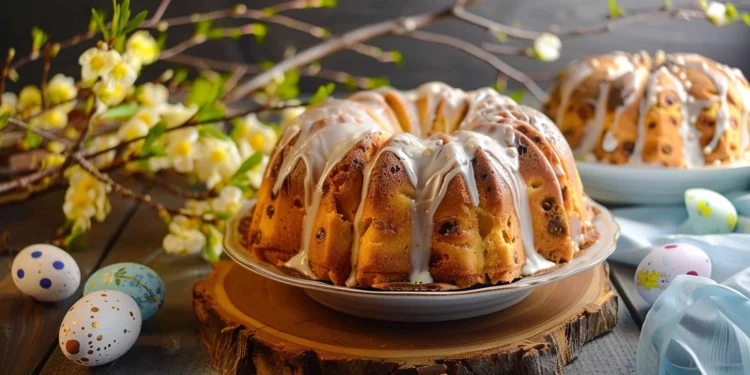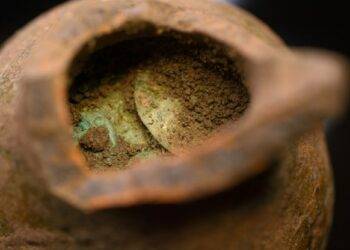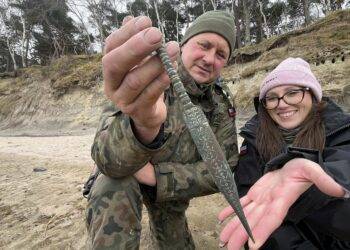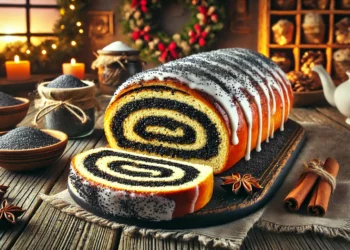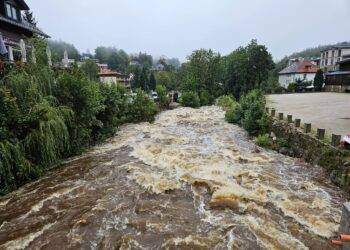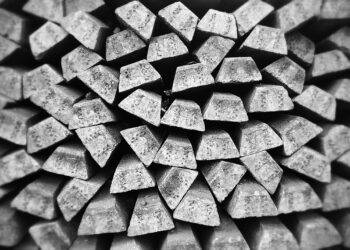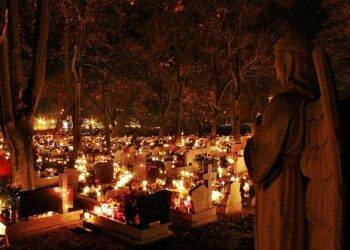In the tapestry of Polish culinary traditions, the Easter Babka Wielkanocna stands out as a symbol of spring, renewal, and joy. This sweet, yeast-leavened cake, with its light, airy texture and golden crust, is a staple of Polish Easter celebrations, gracing tables with its presence and delighting all who partake. But what makes the Babka Wielkanocna so special, and how can you recreate this festive treat in your own kitchen, ensuring it carries the authentic taste and spirit of Polish Easter? Join us as we embark on a culinary journey to explore the history of Babka, uncover the secrets to its preparation, and share tips that will make your Babka the star of your Easter feast.
A Slice of History
The tradition of the Easter Babka in Poland is steeped in centuries-old customs and religious symbolism. The word “babka,” derived from “baba,” signifies “woman” or “grandmother” in Polish, reflecting the cake’s traditional tall, rounded shape, reminiscent of a woman’s skirt. Initially, Babka was a simple, dense cake made from unleavened dough. However, as culinary techniques evolved, so did Babka, transforming into the rich, sweet bread known today, symbolizing the abundance and joy of Easter after the Lenten season’s austerity.
Ingredients:
For the Cake:
- 1 packet (2 1/4 teaspoons) of active dry yeast: This is the leavening agent that will help the cake rise.
- 1/4 cup warm milk (about 110°F/45°C): The warmth activates the yeast. Be careful not to make it too hot, as extreme heat can kill the yeast.
- 2/3 cup of sugar, plus a pinch for the yeast mixture: Sugar not only sweetens the cake but also feeds the yeast.
- 3 1/2 cups of all-purpose flour: The base of your cake. Sifted flour is lighter and combines more easily with other ingredients.
- Pinch of salt: Enhances the flavor of the cake.
- 4 large eggs, at room temperature: Eggs add richness and structure to the cake.
- 1 teaspoon vanilla extract: Adds flavor.
- Zest of 1 lemon: Provides a citrusy brightness to the cake.
- 1/2 cup (1 stick) unsalted butter, melted and cooled: Adds moisture and richness.
- Raisins, nuts, or candied fruit for added texture (optional)
For the Glaze:
- 1 cup powdered sugar
- 2-3 tablespoons of milk or lemon juice: Adjust for desired consistency.
- 1/2 teaspoon vanilla extract (optional)
- Sprinkles or candied orange peel for decoration (optional)
Instructions:
Preparing the Yeast Mixture:
- Activate the Yeast: In a small bowl, dissolve the yeast and a pinch of sugar in warm milk. Let it sit for about 5-10 minutes until it becomes frothy. This indicates the yeast is active and ready to use.
Making the Dough:
- Combine Dry Ingredients: In a large bowl, sift together the flour and salt. Sifting aerates the flour, making the cake lighter.
- Mix Wet Ingredients: In another bowl, whisk together the eggs, sugar, vanilla extract, and lemon zest until well combined.
- Combine Wet and Dry Ingredients: Make a well in the center of the dry ingredients, pour in the yeast mixture and the egg mixture. Begin to mix, gradually incorporating the flour from the sides of the well.
- Add Butter: Add the melted butter and mix until the dough comes together. It should be sticky and soft.
- Knead the Dough: Transfer the dough to a lightly floured surface and knead for about 8-10 minutes until smooth and elastic. Kneading develops the gluten in the flour, giving the babka its structure.
First Rise:
- Let the Dough Rise: Place the dough in a greased bowl, covering it with a clean towel. Let it rise in a warm, draft-free place for 1-1.5 hours, or until it has doubled in size. The warmth and time allow the yeast to ferment, causing the dough to rise.
Preparing the Pan:
- Prepare the Bundt Pan: Generously butter a Bundt pan and dust it with flour, tapping out any excess. This prevents the cake from sticking.
Second Rise:
- Shape and Second Rise: Once risen, punch down the dough to release air bubbles. Place the dough into the prepared Bundt pan, cover, and let it rise again for about 30 minutes.
Baking:
- Preheat Oven: Preheat your oven to 350°F (175°C) during the second rise.
- Bake: Bake the babka for 35-40 minutes, or until golden brown and a tester inserted into the cake comes out clean.
- Cool: Allow the babka to cool in the pan for 10 minutes, then turn it out onto a wire rack to cool completely.
Glazing the Cake:
- Prepare the Glaze: Whisk together powdered sugar, milk (or lemon juice), and vanilla extract until smooth.
- Glaze the Babka: Once the cake is cool, drizzle the glaze over the babka. Allow the glaze to set before serving.
Tips for Perfect Babka:
- Room Temperature Ingredients: Make sure your eggs and milk are at room temperature to ensure they integrate smoothly into the batter.
- Proofing Spot: A turned-off oven with the light on or a spot near a warm window is great for proofing dough.
- Don’t Rush: The key to a light and fluffy babka is allowing it ample time to rise.
- Baking Time May Vary: Oven temperatures can vary, so start checking your babka a few minutes before the suggested baking time.
The Polish Easter Babka is more than just a cake; it’s a celebration of renewal, family, and the joys of spring. By following this guide, you’re not only keeping alive a cherished culinary tradition but also inviting the warmth and richness of Polish culture into your home. Whether you’re of Polish descent or simply seeking to diversify your Easter repertoire, the Babka Wielkanocna offers a deliciously sweet symbol of hope and rebirth. So this Easter, as you slice into your homemade Babka, remember the history and love baked into every bite, and may it bring joy and satisfaction to you and your loved ones.

